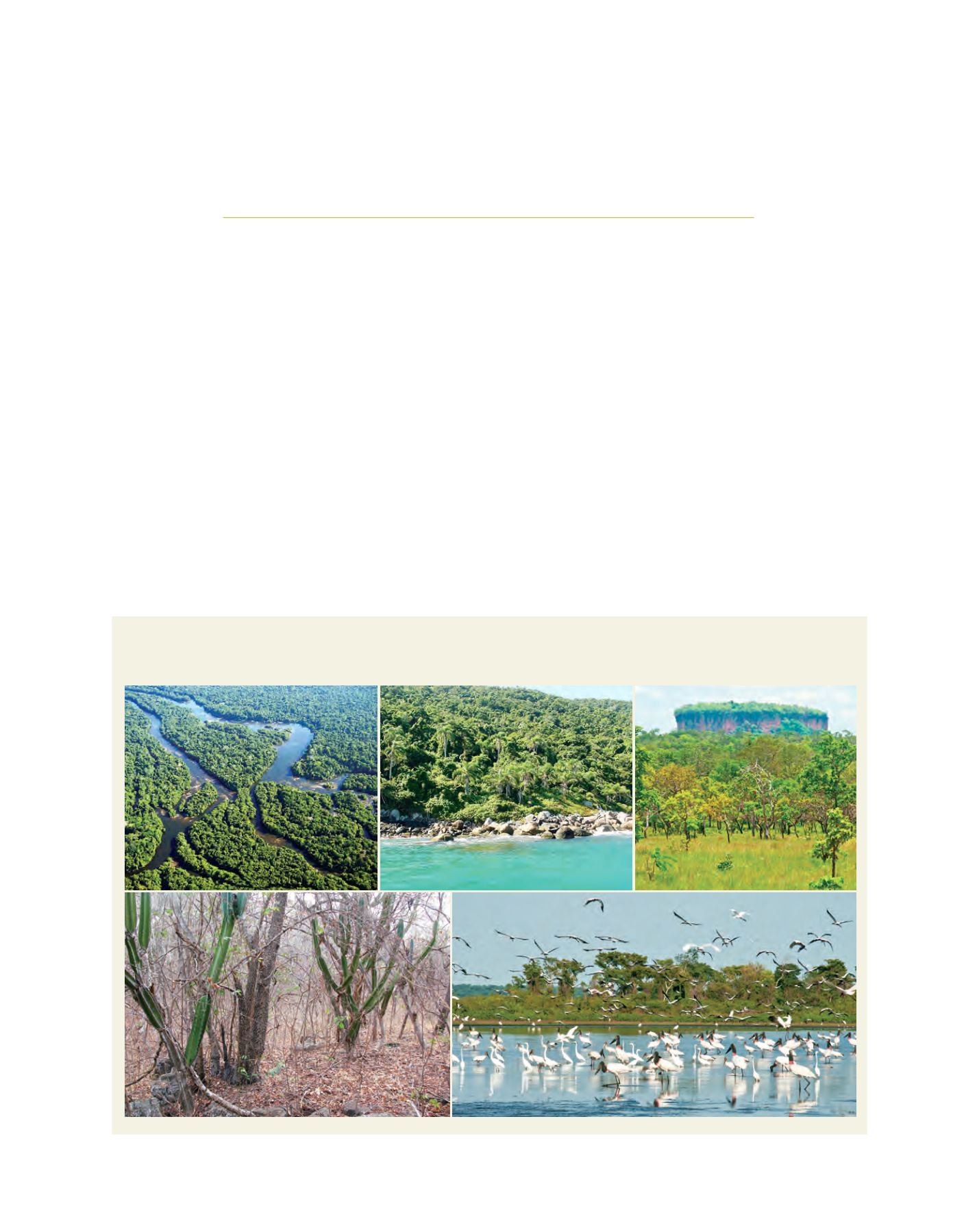

[
] 248
Forests and people:
Brazilian policies and initiatives
João de Deus Medeiros, Forest Department, Ministry of the Environment, Brazil
B
razil is the largest country in the Southern Hemisphere,
having a territory that represents approximately 5.7 per
cent of Earth’s and 47.3 per cent of South America’s
land area. Its forests, both public and private, are treated as
natural assets that can provide a range of goods and serv-
ices which play a decisive role in economic development and
social welfare on different scales. From an economic point of
view, for instance, the various activities in natural and planted
forests directly contribute to almost 4.5 per cent of the Gross
Domestic Product (GDP). This value becomes greater if one
considers the environmental services associated like water
production, soil conservation and provision of pollinators, all
crucial for several industry sectors such as agriculture and
power generation.
In order to promote the conservation and sustainable
use of forestry resources, the Brazilian Government has
developed a series of policies and programmes whose
implementation relies on the participation of various
sectors of society.
Beyond biological diversity, Brazilian forests are
home to more than 200 indigenous tribes and a large
number of local communities such as
quilombolas
1
,
caiçaras
2
, and
seringueiros
3
. They bring a priceless
collection of traditional knowledge on biodiversity
conservation. In recognizing the importance of main-
taining the traditional way of life of these people,
the Brazilian Government created some typologies
of protected areas, where the presence of human
Brazilian forest biomes
Brazil has a high diversity of forest types occupying about 61 per cent of its territory, which can be broadly classified by its biomes: Amazon rainforest
(419.7 million ha (1), Atlantic rainforest (
Mata Atlântica
) (28.8 million ha) (2), Cerrado (70 million ha) (3), Caatinga (46.8 million ha) (4), and the
Pantanal (8.55 million ha) (5).
4
1
4
2
3
5
















